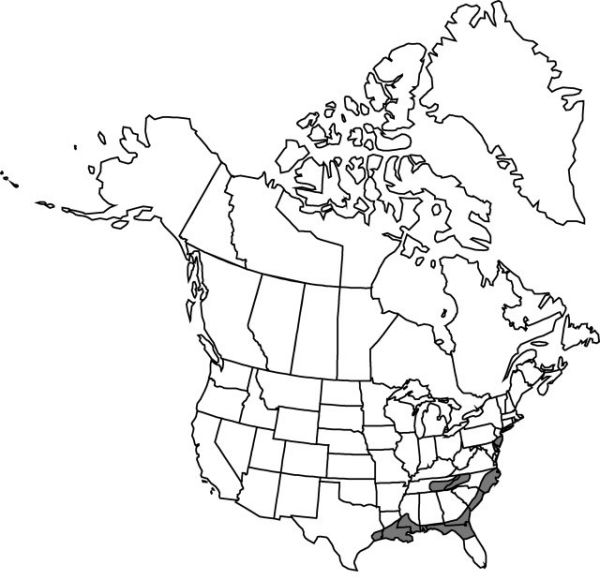Platanthera integra
Bot. North. Middle States ed. 2, 348. 1848.
Plants 20–75 cm. Leaves 1–3, ascending to spreading, rather abruptly or gradually reduced to bracts distally; blade lance-oblong to linearlanceolate, 4.5–32 × 1–3 cm. Spikes dense. Flowers resupinate, showy, pale yellow-orange to pale orange; dorsal sepal entire or rarely apically dentate; lateral sepals spreading; petals elliptic to linear-oblong, margins entire; lip descending, ovate-elliptic to obovate or oblong, 3–5 × 1.5–4 mm, margins eroded to lacerate or rarely entire, with basal pair of fleshy ridges on adaxial surface; spur tapering from broad base to slender tube, 5–10 mm; rostellum lobes curved downward, short, rounded; pollinaria essentially straight; large pollinia protruding forward; viscidia orbiculate to suborbiculate; ovary slender to somewhat stout, 5–11 mm.
Phenology: Flowering Jul–Sep.
Habitat: Wet pine barrens, peaty depressions in pine savannas, wet sandy woods
Elevation: 0–900 m
Distribution

Ala., Del., Fla., Ga., La., Miss., N.J., N.C., S.C., Tenn., Tex.
Discussion
As in Platanthera clavellata and P. nivea, the column of P. integra bears two pairs of lateral processes. In P. integra, the distal structures are essentially sessile and cushionlike, as in P. nivea, but the proximal are short, stout, clublike, and bear several stout horns. The tuberoids of P. integra are abruptly swollen into oblong-cylinders, somewhat like those of P. nivea. These three species evidently form a group apart from Platanthera. See note under 30. P. nivea.
Selected References
None.